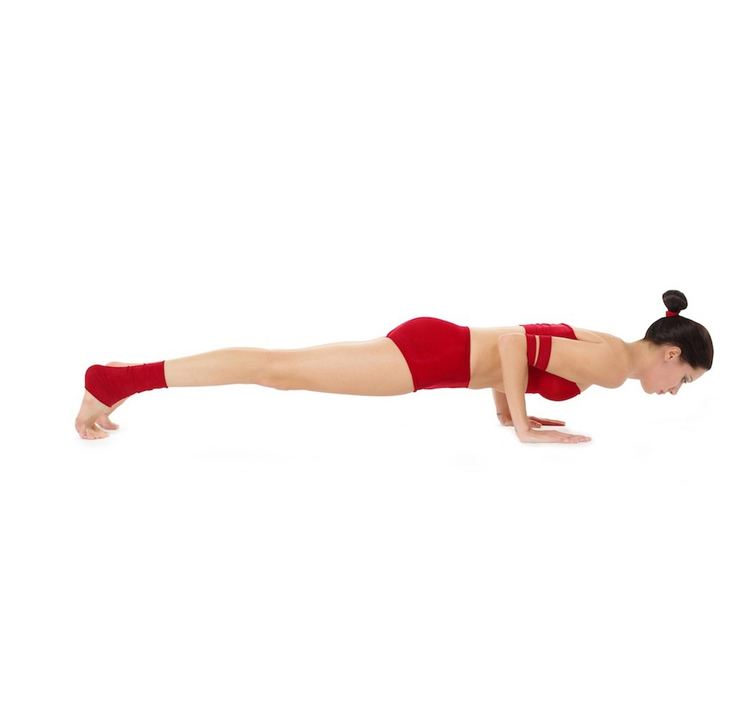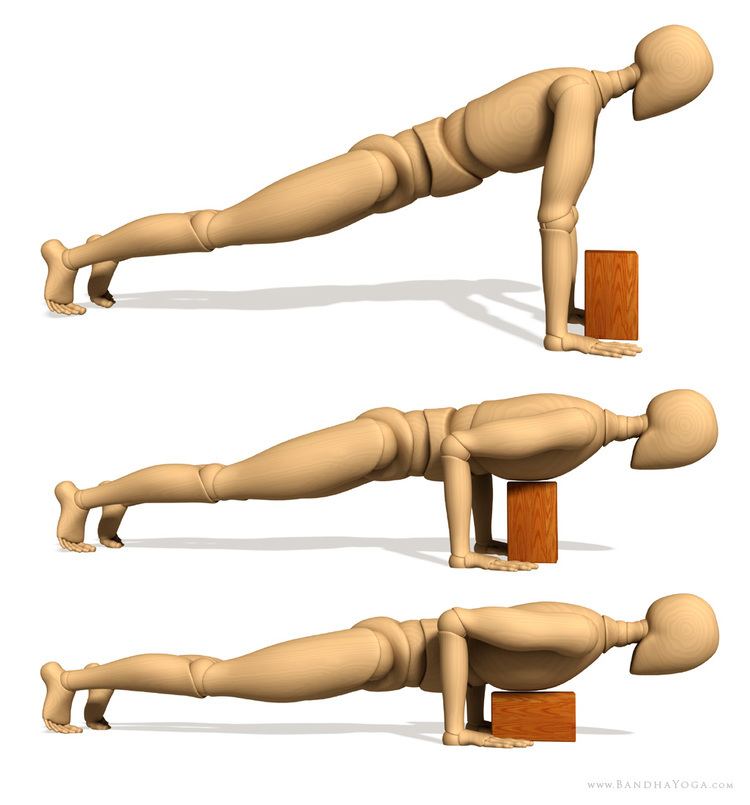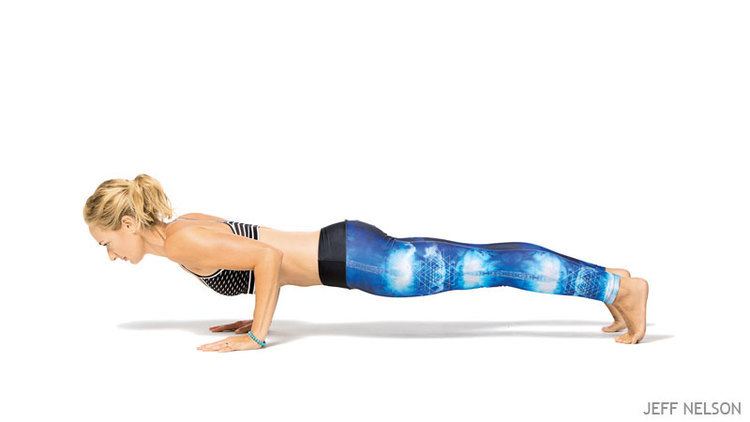Strengthens Arm, Wrist Also known as Four-limbed staff pose | Pose type Arm balance, Core | |
 | ||
Note Consult a doctor before beginning an exercise regime Preparatory poses Bhujangasana, Urdhvamukha shvanasana, Phalakasana Follow-up poses Adho mukha śvānāsana, Urdhvamukha shvanasana Similar Dandasana, Adho mukha śvānāsana, Urdhvamukha shvanasana, Uttanasana, Bakasana | ||
Chaturanga dandasana yoga
Chaturanga Dandasana (Sanskrit: चतुरङ्ग दण्डासन; [cɐt̪urɐŋgɐ d̪ɐɳɖɑːsɐn̪ɐ]; IAST: Caturaṅga Daṇḍāsana) or Four-Limbed Staff Pose, also known as Low Plank, is a Yoga asana, in which a straight body parallel to the ground is supported by the toes and palms, with elbows at a right angle.
Contents
- Chaturanga dandasana yoga
- How to do chaturanga dandasana yoga pose or how to perfect your vinaysa
- Etymology
- Description
- Common Mistakes
- Variations
- Practice Points
- Effects
- Cautions
- Anatomy
- References

How to do chaturanga dandasana yoga pose or how to perfect your vinaysa
Etymology
The name comes from the Sanskrit words chatur (Sanskrit: चतुर्; IAST:catur) meaning "four", anga (Sanskrit: अङ्ग; IAST: aṅga) meaning "limb", danda (Sanskrit: दण्ड; IAST:daṇḍa) meaning "staff" (refers to the spine, the central "staff" or support of the body), and asana (Sanskrit: आसन; IAST:Āsana) meaning "posture" or "seat".
Description

In Chaturaṅga Daṇḍāsana the hands and feet are on the floor, supporting the body, which is parallel to and lowered toward, but not touching, the floor. It looks much like a push up, but with the hands quite low (just above the pelvis), and the elbows kept in along the sides of the body.

When performed correctly, it can help prepare the body for arm balance asanas by strengthening important muscles and promoting good form.
In vinyasa styles of yoga, Caturaṅga Daṇḍāsana is part of the Sun Salutations Sūrya Namaskāra A and B. In the sequences it is performed on an exhale, and the dṛṣṭi दृष्टि is the nāsāgre (नासाग्र) with the face pointing forwards. In Sūrya Namaskāra A it is the fourth count (catvāri, चत्वारि), and in Sūrya Namaskāra B it is performed on the fourth, eighth and twelfth counts (catvāri, चत्वारि;aṣṭa,अष्ट;dvādaśa,द्वादश respectively).
In yoga practice without vinyasa the asan is simply held for a period of time (for instance, 30 seconds) with continuous breathing.
Common Mistakes
Don't sink your torso below the elbow level because this puts a lot of pressure on the elbow joints. When doing this try to bring your chest up and distribute the weight of the body equally between the upper and the lower body - push your heels back. Don't do it without proper guidance.
Variations
If unable to perform a standard Caturaṅga Daṇḍāsana, it can be done with the knees on the floor.
Practice Points
Some practice points that may apply are:
Effects
This asana helps to tone arm and forearm muscles and develops flexibility and power in the wrists, as well as toning abdominal organs and building repository muscles.
Cautions
Due to the unique musculotendinous nature (this joint is not a junction of bones, but rather supported by muscles and tendons alone) of the Scapulothoracic joint and unusual mobility of the Glenohumeral joint involved in movement of the shoulder and upper back, weak serratus anterior may lead to winging of the shoulder blades in Caturaṅga Daṇḍāsana and cause shoulder and/or elbow pain and/or clicking. Particularly in cases were Caturaṅga Daṇḍāsana or other chest strengthening asanas are practiced excessively, to the point of muscle exhaustion, which causes weaker, but anatomically more suited, muscles to hand their support responsibility over to stronger, but perhaps less ideal muscles; in the case of Caturaṅga Daṇḍāsana the triceps and pectoral muscles can sometimes compensate for weak serratus anterior. This may require concerted professional help to re-educate the muscles and re-engage muscle action in the serratus anterior during such movements.
Lumbar hyperextension and hip flexion is a result of weakness in this asana, which can be corrected by activating the hamstrings.
Anatomy
The spine and sacroiliac joint are neutral. The hips are adducted, rotated internally, and exhibit neutral extension. The knee is extended. The ankle is dorsiflexed. The scapula is protracted or neutral. The glenohumeral joint is neutral. The elbow is flexed, and the wrist is extended.
The obliques, rectus abdominis and psoas minor work eccentrically to stabilize the spine, and the spinal muscles work concentrically. The hamstrings, adductor magnus and gluteus maximus work concentrically in the legs, while the psoas major, iliacus, and rectus femoris work eccentrically keeping the hip in neutral extension. The vastii and articularis genus provide knee extension. The gastrocnemius and soleus modulate the tibialis anterior to dorsiflex the foot, and finally the intrinsic and extrinsic foot muscles are active.
In the upper body the serratus anterior works eccentrically to prevent winging of the scapula. The muscles of the rotator cuff include the subscapularis (which protects the front of the joint), and the infraspinatus and teres minor (which work to externally rotate the humerus against the pull of the pectoralis and coracobrachialis). The pectoralis major, pectoralis minor, coracobrachialis, and triceps work eccentrically. The pronators and the intrinsic and extrinsic hand muscles are also active.
